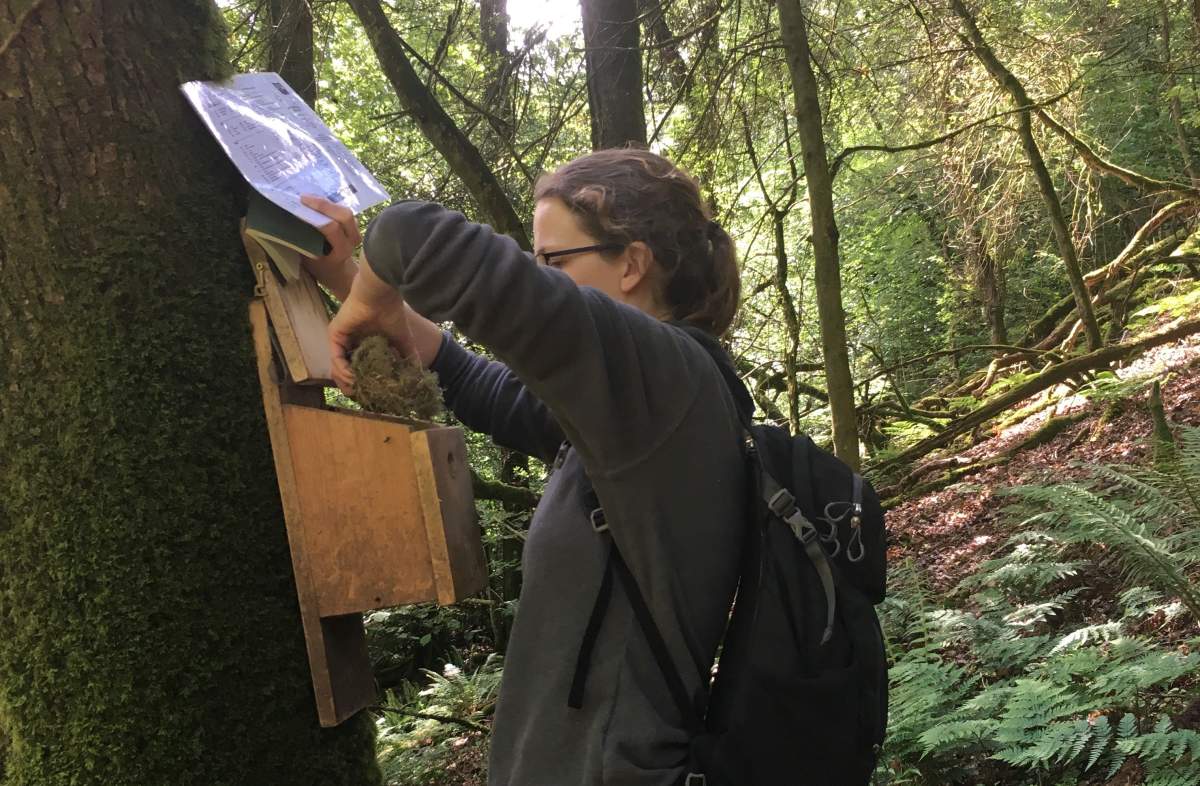Most of us think zoos are about exotic species and conservation in faraway places – but bird keepers at Paignton Zoo are working on a project based in the heart of Devon.
Animal staff from the charity zoo have teamed up with other bird groups to help the local pied flycatcher population on the edge of Dartmoor. The aim of the project is to erect nest boxes and monitor the species in Holne Woods, which is part of Dartmoor National Nature Reserve.
Starting in March this year, Paignton Zoo Bird Department keepers Peter Smallbones, Ian Grant, Rob Peters, Paul Jaques and Lisa Jones put up 28 new boxes, adding to the 38 boxes erected in 2018. All the boxes are made by Rob and a Paignton Zoo volunteer. Each box is GPS marked using a handheld device. In total, 9 visits were made to monitor the boxes; they used the British Trust for Ornithology nest recording coding system to detail what they found.
Paignton Zoo Senior Head Keeper of Birds Pete Smallbones: “We achieved our goal for 2019. The boxes we provided helped increase the number of pied flycatchers nesting in our monitoring area. We tried placing the new boxes at a slightly lower height, which made monitoring easier – we got two new pied flycatcher nests and lots more blue tit nests.”
Three of the team attended a conference bringing together people from other Devon and Cornwall pied flycatcher nest box schemes, taking the opportunity to talk with experienced monitors.
The European pied flycatcher Ficedula hypoleuca is a migratory woodland bird that breeds in northern Europe and winters in sub-Saharan Africa. This species is a good example of how climate change can affect the breeding success of birds – if spring starts earlier, then caterpillars emerge sooner, before the flycatchers return.
Pete: “In the 2018 season, 25 pied flycatchers successfully fledged. In 2019 the number increased to 46 birds. In total 8 boxes held pied flycatcher nests, double the previous year’s total, with an average of 5.75 chicks successfully fledging per box. We were very pleased to see 79% of all pied chicks fledging.” Nest boxes were also used by blue tits, great tits and nuthatch.
The 2019 season also saw 4 pied flycatcher and 4 blue tit juveniles ringed by Pete under observation from BTO ringing trainer Robbie Philips. Pete: “I’m still a trainee, so I can’t carry out any BTO ringing unsupervised, but I hope to complete my training during the 2020 season so that more of the birds in our monitoring area can be ringed, adding further research value to our initiative.”
“Next year some boxes will need replacing – we’ll probably add no more than half a dozen new ones, lower down the valley where several pairs of birds were observed this year. We spotted redstart and goosander in the monitoring area this year. Redstart are on the UK Amber List, the second tier of conservation concern, so we hope to put several suitable nest boxes up to encourage them. We’ll also put in a few goosander boxes along the river.”
They share their data with Dr Malcolm Burgess and the PiedFly.Net monitoring programme for South West England and with the BTO online. Their work is supported by funds from Wild Planet Trust, the charity behind Paignton Zoo. Curator of Birds Jo Gregson helped to get the ball rolling with landowners. Paignton Zoo is a registered charity; for more information, go to www.paigntonzoo.org.uk or ring 01803 697500.

You can join us on our social media pages, follow us on Facebook or Twitter and keep up to date with whats going on in South Devon.
Got a news story, blog or press release that you’d like to share or want to advertise with us? Contact us




























